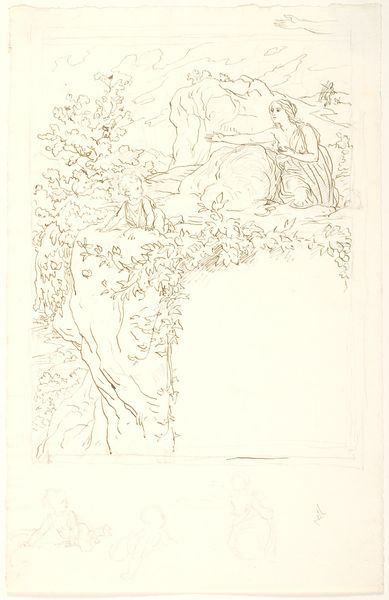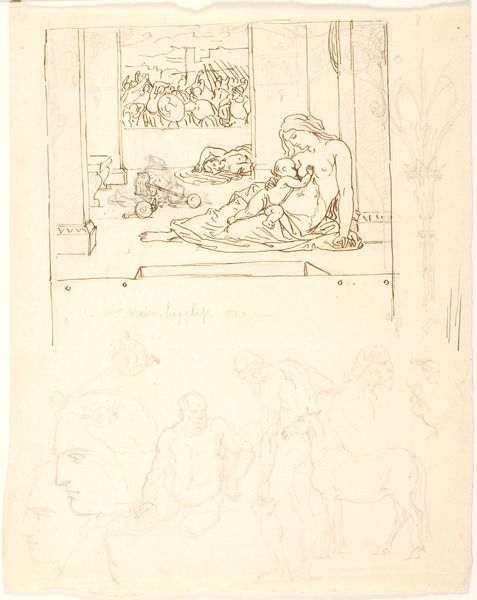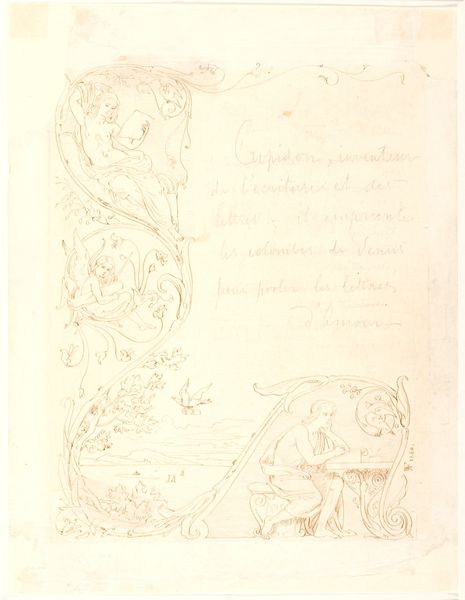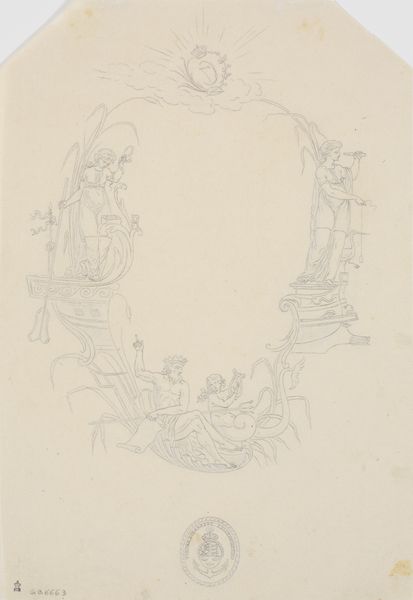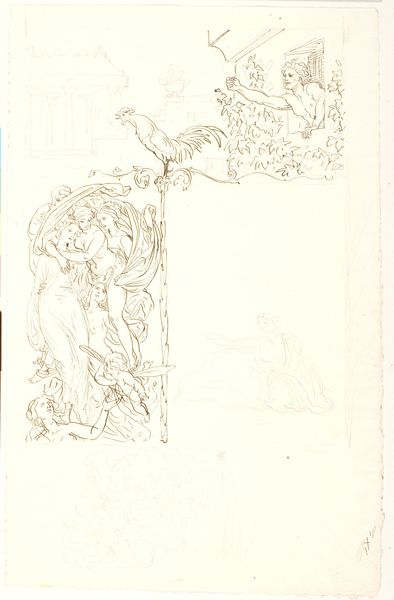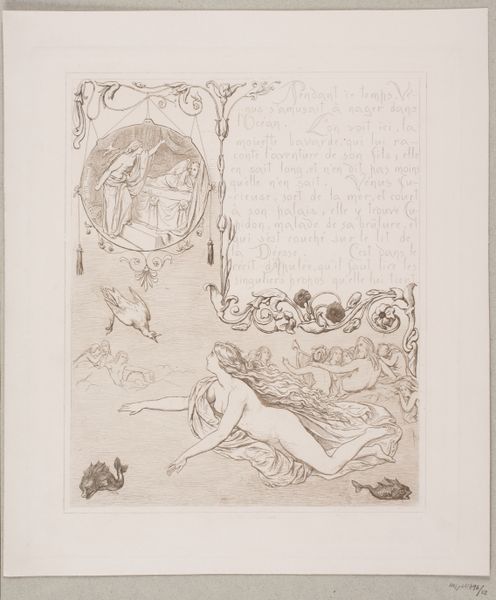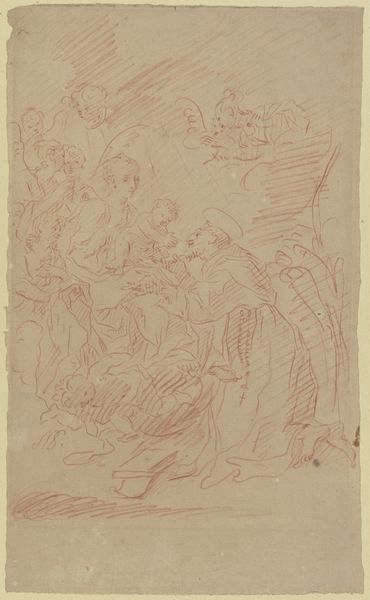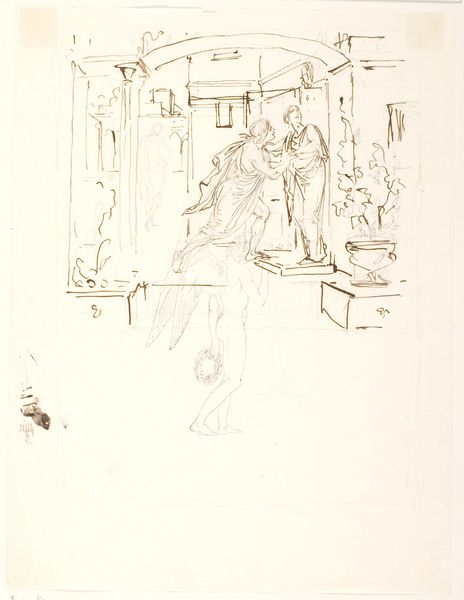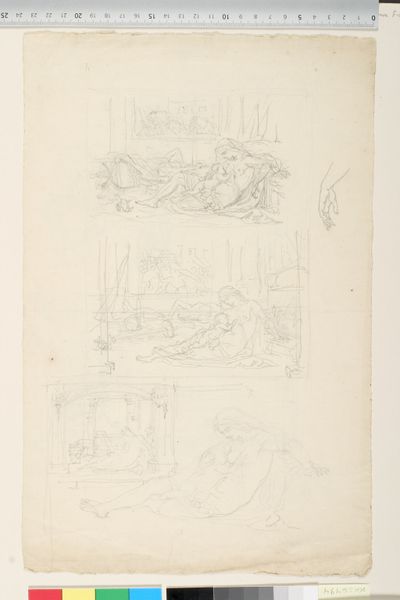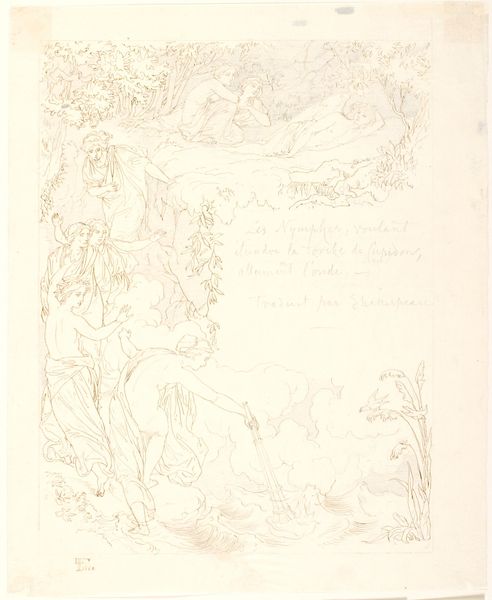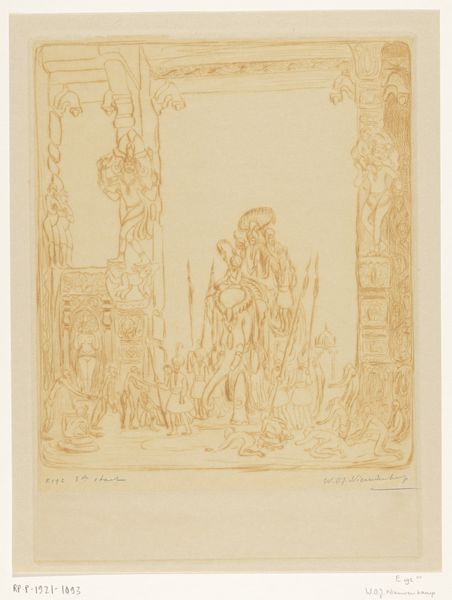
Dimensions: 270 mm (height) x 208 mm (width) (bladmaal)
Editor: Okay, so we’re looking at "The Woman Who Envies the Man His Freedom" by Lorenz Frølich, created around 1860. It's an ink drawing, and it feels intensely melancholic to me. The contrast between the man striding confidently towards the sun and the downcast woman is just… stark. What captures your attention in this piece? Curator: Ah, stark indeed! It’s a beautiful whisper of yearning, isn’t it? Almost a secret shared across time. For me, it’s the double vision Frølich gives us. Not just a scene, but a layered sentiment. Notice how the classical elements—the robes, the floral decorations—clash a bit with the raw emotion. Is it Romanticism colliding head-on with Classicism? Editor: I hadn’t considered that. It almost feels like she’s trapped in a classical ideal while longing for a Romantic freedom. Do you think he’s making a commentary on societal expectations of women during that era? Curator: Precisely! Imagine being confined by those expectations, those very decorations surrounding her, while observing the world of possibilities open to men. This drawing feels like a whispered rebellion, a silent scream on paper. Think of Ibsen's *A Doll's House* that came a little later – is this an early visual echo of that sentiment? Perhaps she dreams of a sunlit path too? Editor: That makes perfect sense! The positioning, with her literally beneath him in the image, is so powerful now that I consider your point. The seemingly delicate drawing suddenly has so much more bite! Curator: Exactly! Art is such a delightful riddle that begs us to find the secret message. Now, I look at art of that age and cannot avoid the temptation to relate what it does with art today. The idea, and longing for freedom and gender equity lives strong. Editor: Absolutely! Thank you – this drawing has certainly taken on a whole new life for me.
Comments
No comments
Be the first to comment and join the conversation on the ultimate creative platform.
